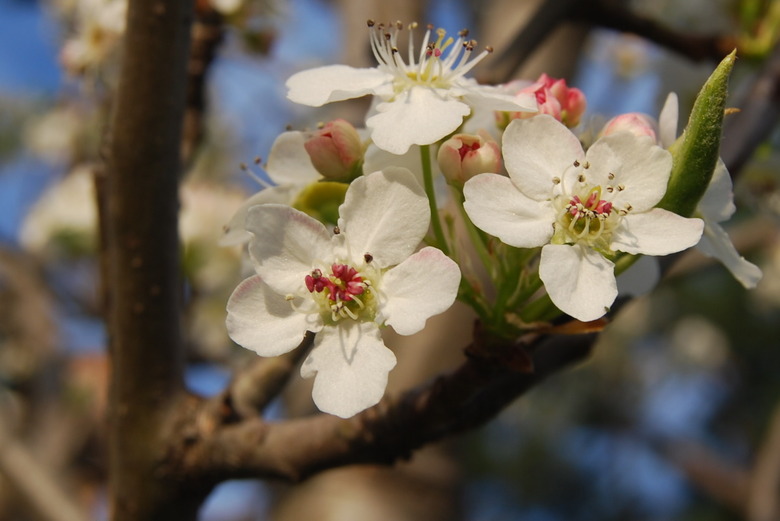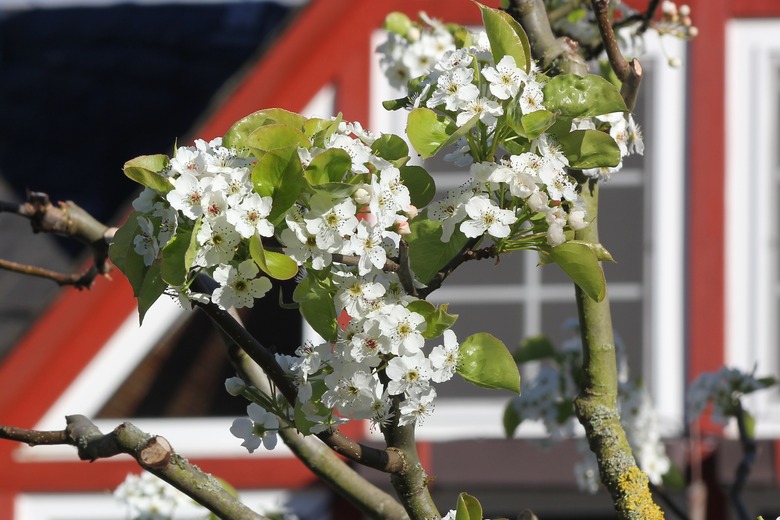Care For A Cleveland Pear Tree
The Cleveland Select pear tree (Pyrus calleryana 'Chanticleer') is a cultivar of the Callery pear. This ornamental pear species with white blossoms was once incredibly popular in the U.S. as a street tree and a residential shade tree but has fallen out of favor because it has become invasive. Cleveland Select pear trees are hardy in USDA plant hardiness zones 5 to 9.
About the Cleveland Pear Tree
Callery pear trees, which are native to Asia, were introduced in the U.S. in the early 1900s with the goal of combating a disease known as fireblight that affects European pear trees (Pyrus communis, zones 4 to 8).
The Bradford pear cultivar (Pyrus calleryana 'Bradford,' zones 5 to 9) was the first Callery pear cultivar developed in the U.S., and it became very popular.
In addition to its disease resistance, it was prized as an ornamental tree because of its fast growth rate and profusion of white flowers that appear in early spring. However, it had a weak branch structure that was prone to breakage, which led to the development of other cultivars.
Because the Bradford pear tree cannot produce seed with its own pollen, it was said to be sterile. However, the introduction of new Callery pear cultivars, like Cleveland Select, meant that these cultivars could cross-pollinate.
Though the Cleveland Select tree, which has a pyramidal shape and a mature height between 25 and 30 feet, was initially thought to be a fruitless replacement for the Bradford pear, both became invasive because of how quickly birds disperse their seeds.
Tip
Callery pear trees, like the Cleveland Select cultivar, are highly invasive. Planting them is no longer recommended.
Cleveland Pear Tree Care
Callery pear trees, like Cleveland Select, grow best in full sun and moist soil with a high humus content. They have the ability to grow in urban environments and can withstand periods of drought when established.
Cleveland Select pear trees require some pruning in the winter months in order to keep their shape and remove diseased or dead branches.
Cleveland Select Pear Tree Removal
Callery pear trees are so invasive that they have been banned in Ohio, with other states opting to do the same. Some states also encourage residents to cut down these trees if they have them in their back or front yards and plant native trees instead.
Tip
Some states urge homeowners to replace Cleveland Select pear trees on their property with native trees.
Cleveland Select and other Callery pear cultivars have a tendency to resprout. Therefore, it is important to completely unroot these trees in order to eliminate them from the landscape.
If uprooting the tree is not possible, then herbicides are usually required to eliminate the root system.
References
- Missouri Botanical Garden: Pyrus calleryana 'Chanticleer'
- University of Cincinnati: Ohio Outlaws Ubiquitous Pear Trees
- University of Dayton Magazine: Once a Landscaper's Favorite, States Are Banning This Tree — and Urging Homeowners to Cut It Down
- Missouri Botanical Garden: Pyrus calleryana 'Bradford'
- Oklahoma State University Extension: The Invasive Callery Pear
- North Carolina State Extension: Pyrus communis
- Arnold Arboretum: The Rise and Fall of the Ornamental Callery Pear Tree

